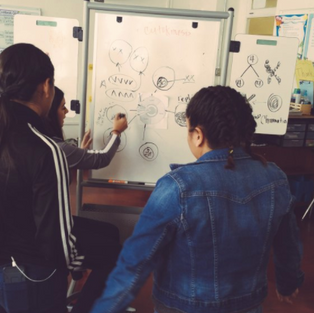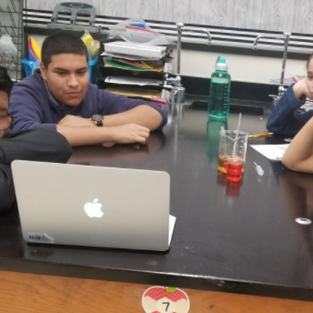Blended Science: A Blended Learning and PBL Hybrid
- Jessica Casillas

- Jul 4, 2020
- 3 min read
I am going to tell you about an amazing teacher, a problem, and a plan to transform education by make learning meaningful and personalized.
Amazing Teacher:
Ms. Chemistry uses Google Classrooms to post Google Form Quizzes, notes, announcements, videos, and extra resources. She may ask them to use the Google Slide to fill in their notes and she may have students complete the worksheets using the videos and resources that she uploaded. When she hears of a new game or interactive program, she tries it out with her students. When she wants them to collaborate, she posts a Google question or discussion and has them comment as an exit ticket. All her lessons are adapted to be completed on smartphones, even though she has a class set of computers. She is enthusiastic, interesting, and designs lessons that she knows most of them will enjoy. She has one to two memorable labs per unit and will have active hands-on- group or individual- lessons for the students. Her students can work with a partner and use their Google Classroom resources to complete their reviews. Assessments are given online. Ms. Chemistry is known for having an engaging class. Students often speak about it being their favorite.
The Problem:
Ms. Chemistry is a fantastic teacher, but even as hard as she tries, not every student is engaged. For example, when she conducts an activity, some of her students finish early and others are taking all her attention away by helping them catch up. She assigns supplemental work for the advanced students. As student-centered as this method seems, students are not necessarily taking ownership for their learning nor are they able to voice which lessons can be done. Their use of technology is not being used to its maximum potential. Because students are not always being given the opportunity to make connections to their own interests and future learning experiences as well as having opportunities to learn their own learning habits, teachers are getting unfair evaluations. The high demands of teaching make it difficult to hit all distinguished marks.
Ms. Chemistry represents teachers who can use program that uses student needs and voices to drive instruction. I, personally, have experienced the power of Problem-Based Learning, where students are given a real-world task, driven by question, and create projects in groups. Students collaborated, participated in discussions, provided each other feedback, and planned the execution of their project. It was an experience that students called memorable and they saw the value in authentic projects. What it was missing was personalization for every students. It required peer pressure and serious consequences to keep uninterested students motivated.
The Plan
So, I considered the concepts of Blended Learning. According to Horn & Staker’s Blended: Using Disruptive Innovation to Improve Schools (2014), BL is the combination of two major ideas: competency-based learning and individualized learning. The student having the choice over the path, the pace, the time, and/or the place to complete a task as part of the personalization (Horn & Staker, p. 34). The students must learn something away from the classroom and make connections with the lesson in person (p.35). This means that students must choose the lessons they want and take the time they need, seek tutoring, and then turn it they are ready (p. 75). The idea of the two would be magical. I decided that Blended Learning would have the following ideas:
Question or task that drives the project
Choices (lessons) over the path, the pace, the time, and/or the place
Customized lessons for all learning abilities
Collaboration
Community outreach
Technology as a tool for communication, collaboration, and work in general
Teachers are facilitators and are available for tutoring
Blended Science will provide teachers the chance to provide students with a more meaningful, engaging, and personalized educational program which builds 21stCentury skills that prepare them for future careers. I will model this for one year in Chemistry and hopefully recruit one teacher. I will gather data, share my story, and document my work. Teachers must see it done, before they can agree to change their entire class structure. The following year, I will recruit more Chemistry teachers to try it. I am to create a lesson bank for differentiation so that over the course of 3 years, Blended Science can be adopted by any Chemistry teacher. Eventually, those Science teachers who are passionate about transforming their traditional classes, will have a support system to help them ease into it. I am looking forward to being able ignite change and reach every student.
Citation:
Horn, M. B., &Staker, H. (2014).Blended: Using disruptive innovationto improve schools.San Francisco, CA: Jossey-Bass.















Comments